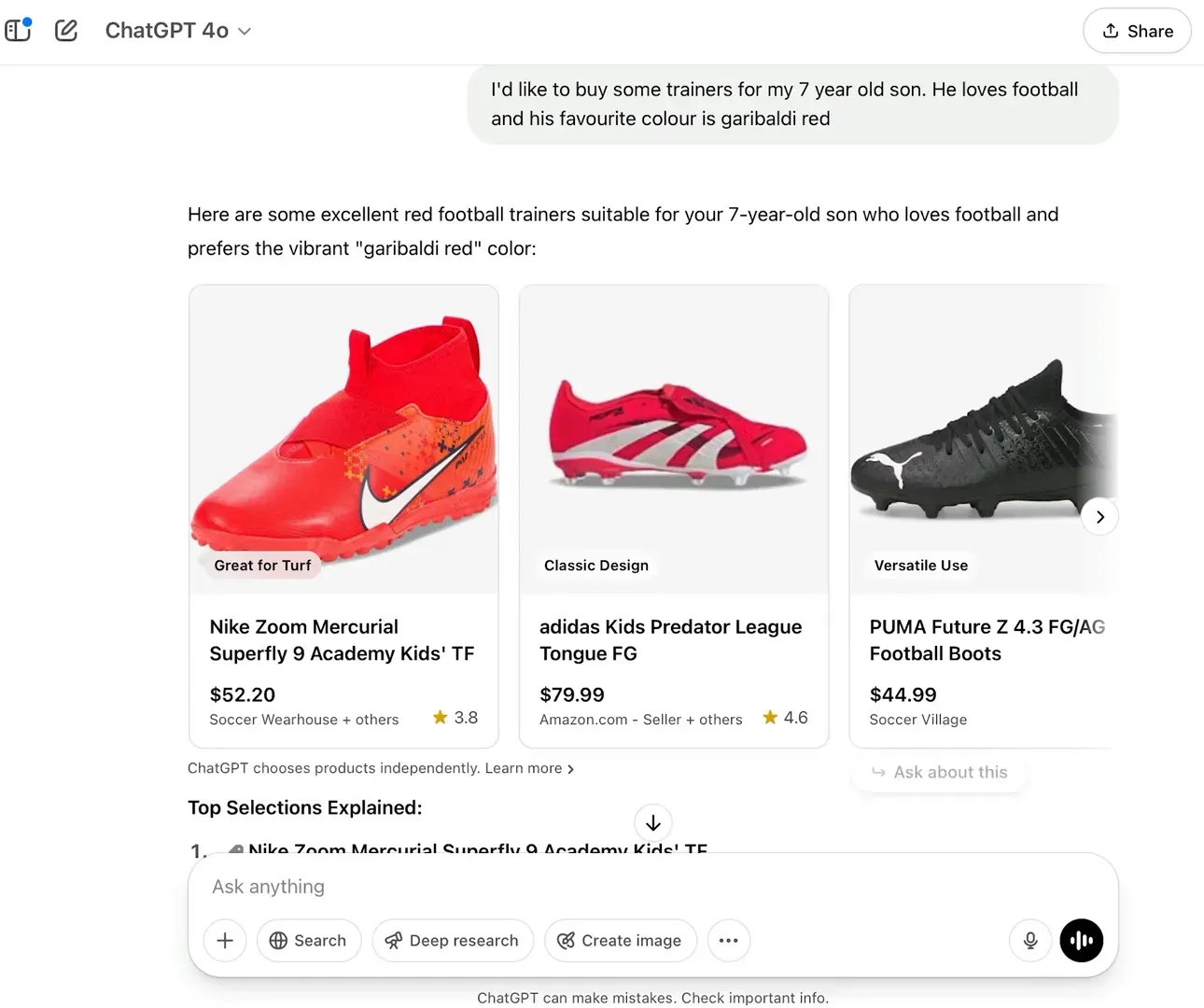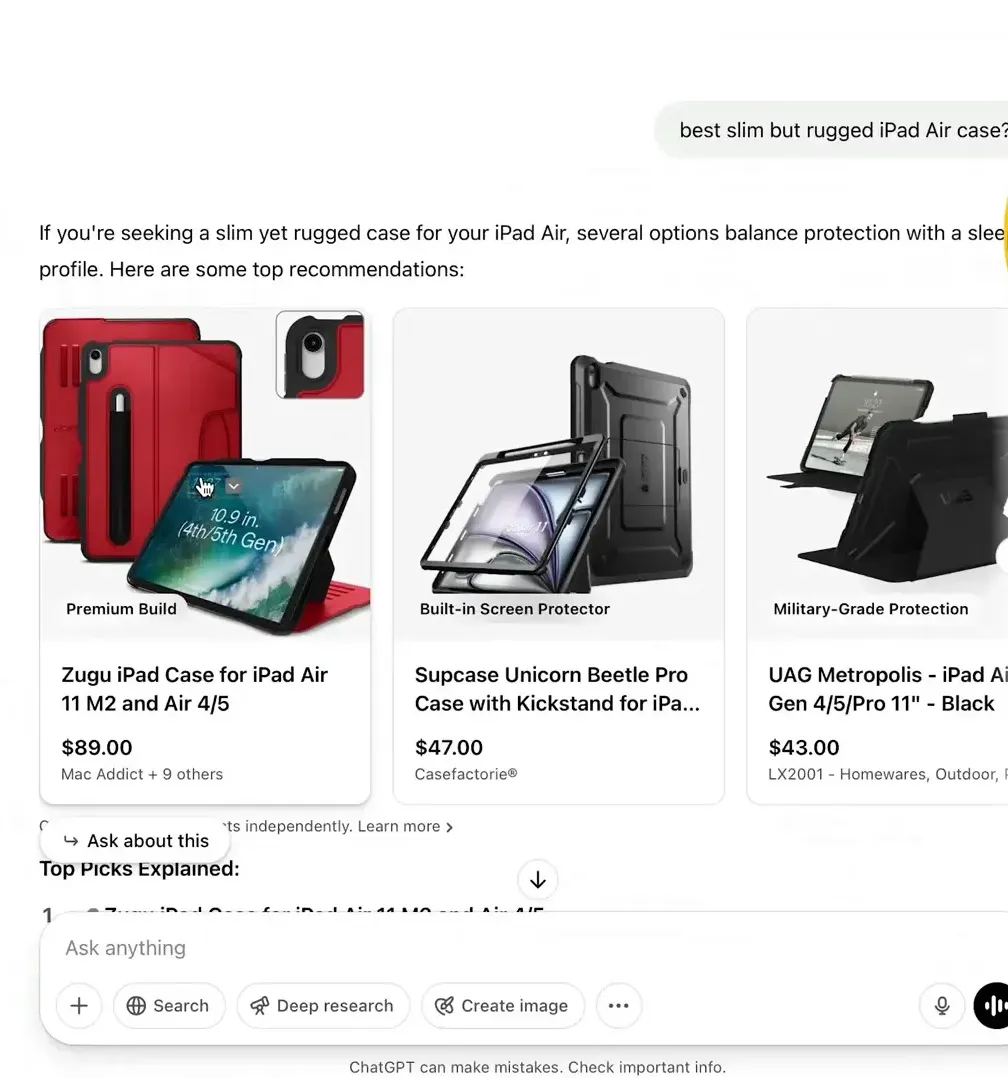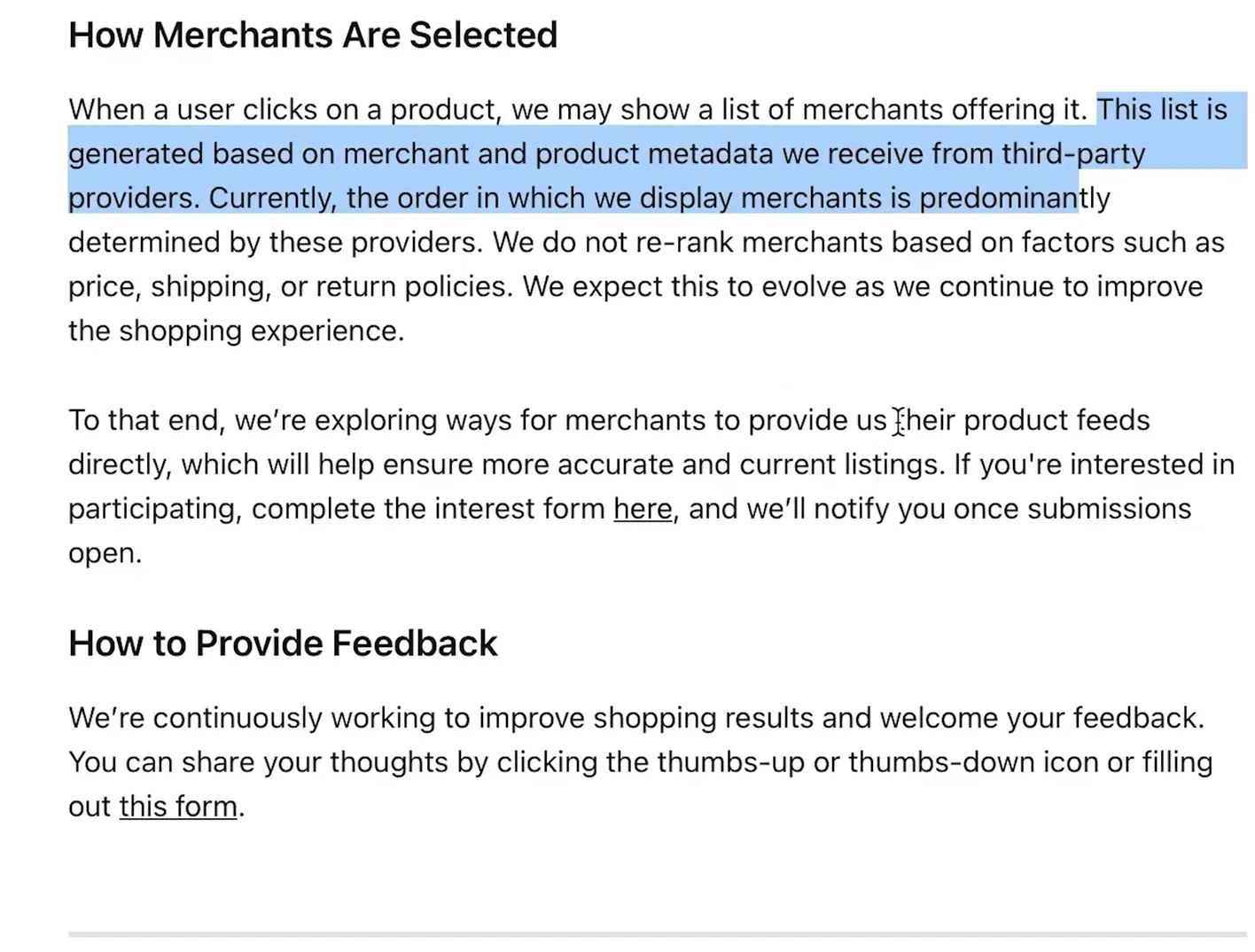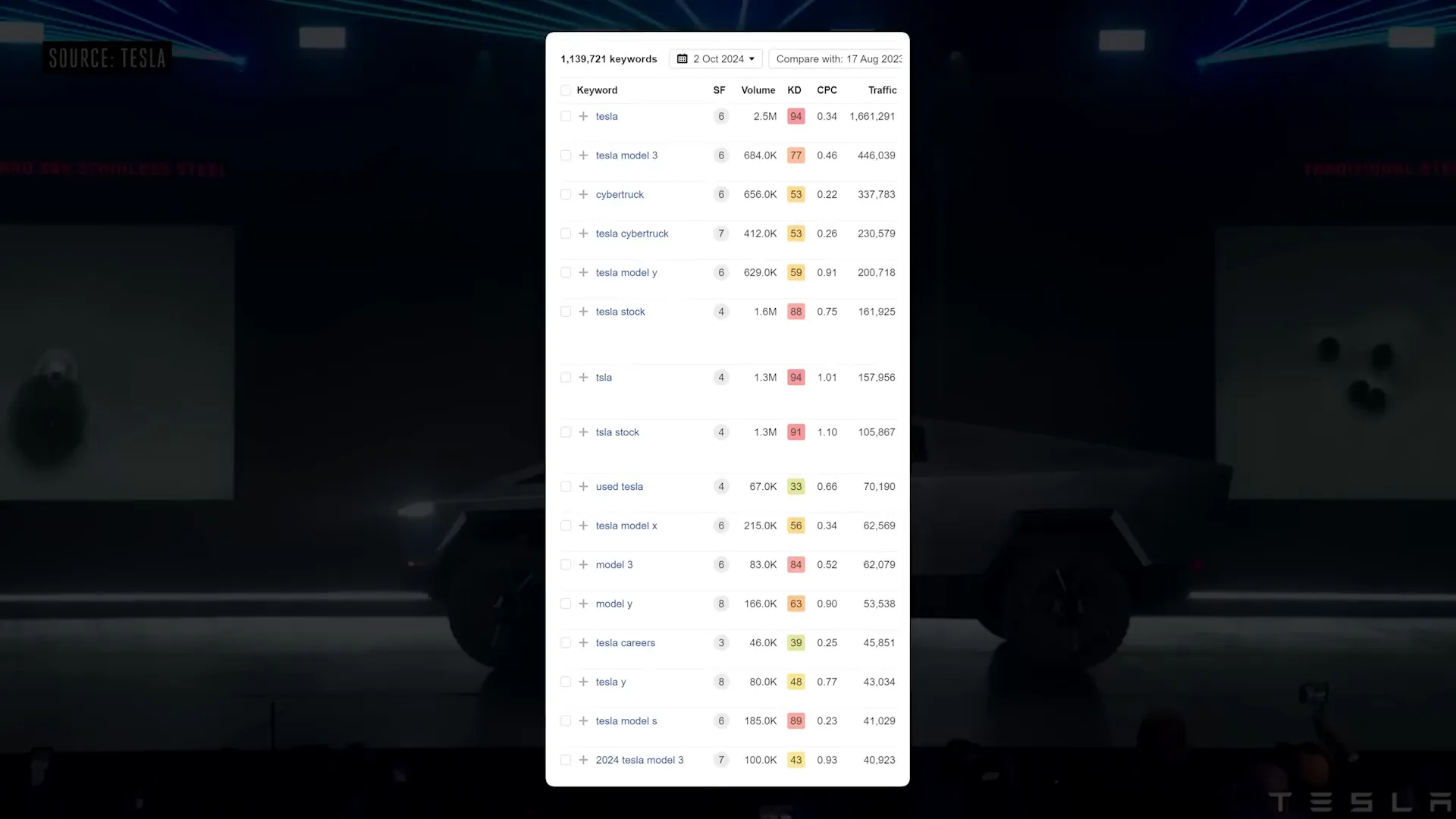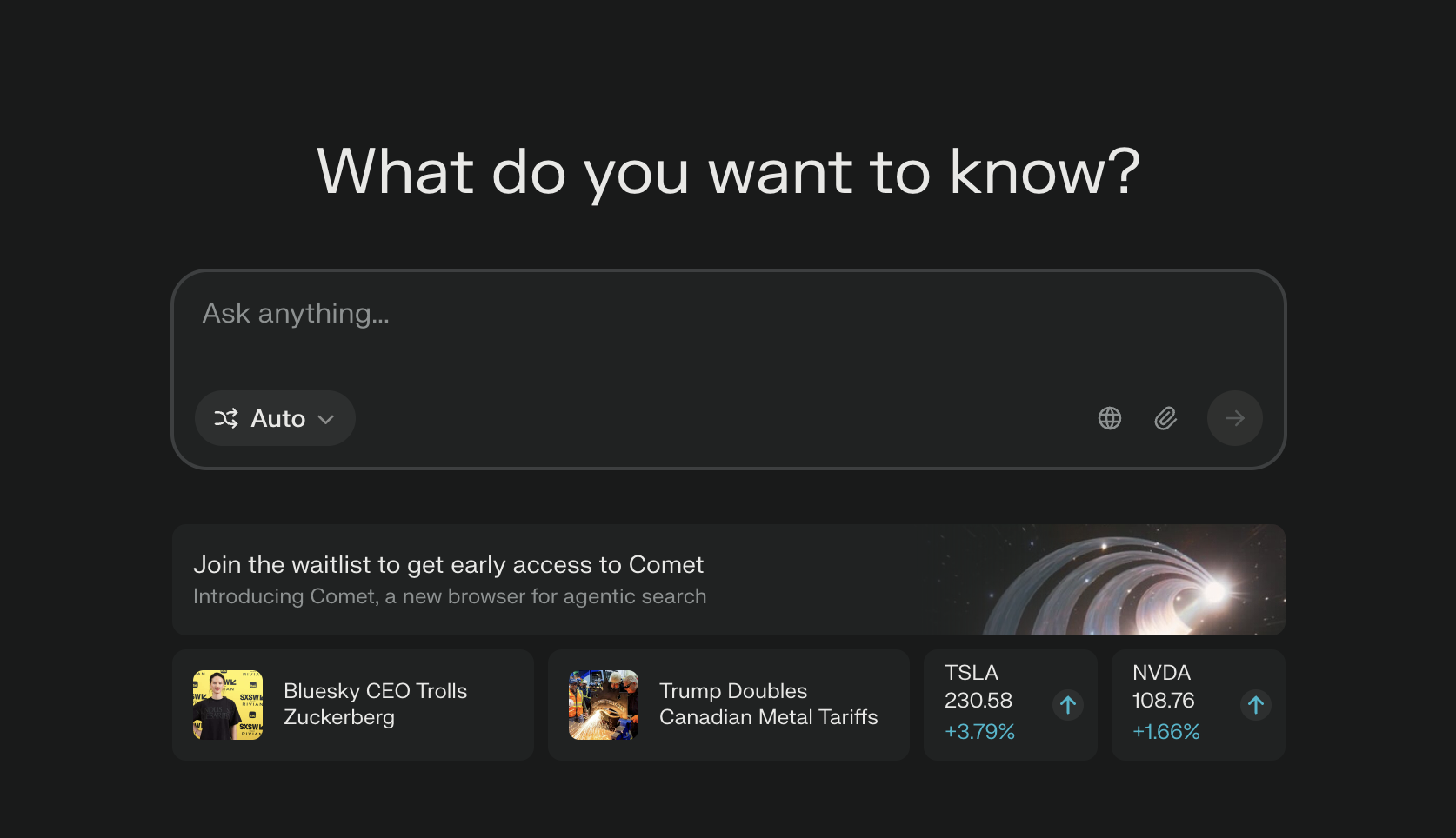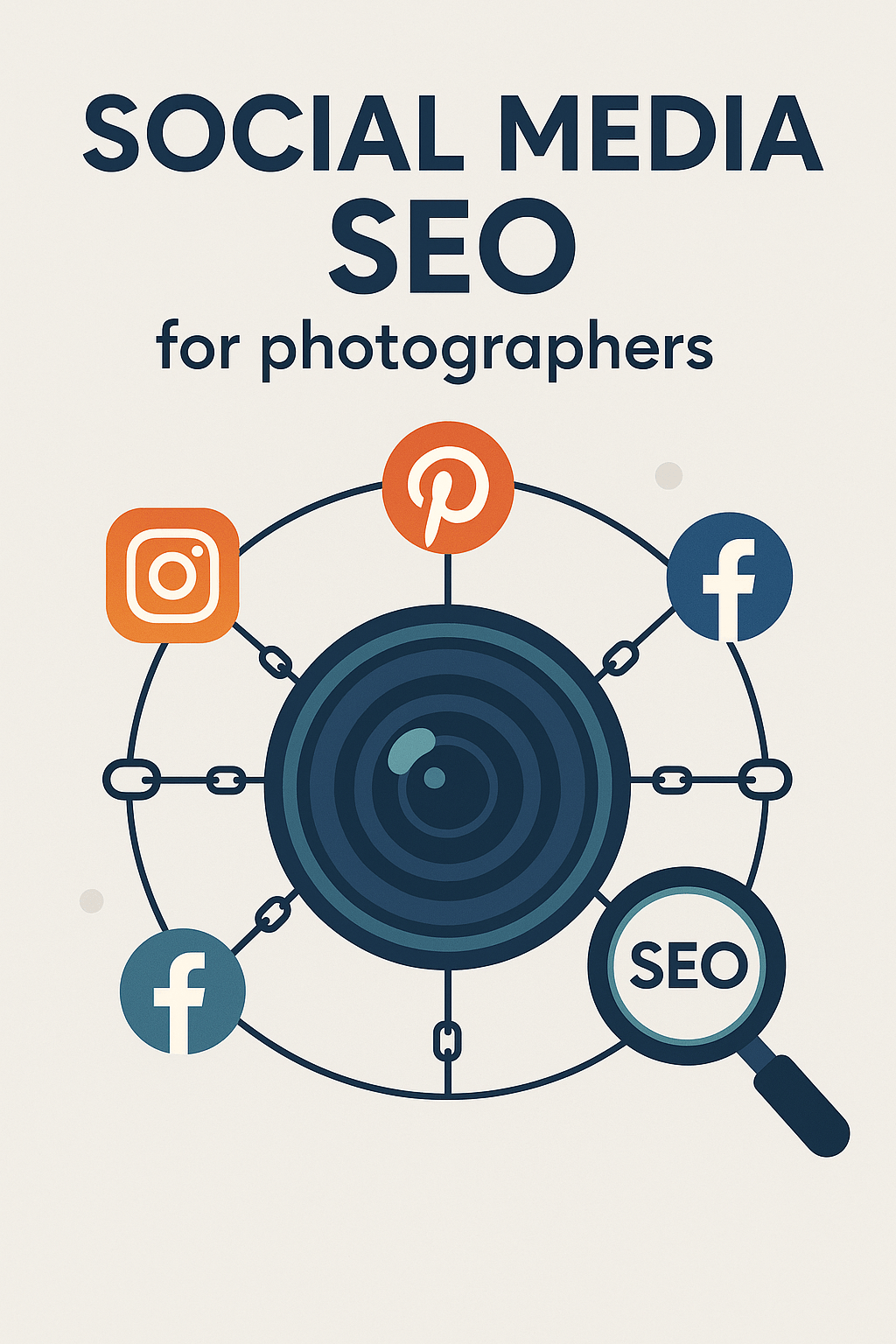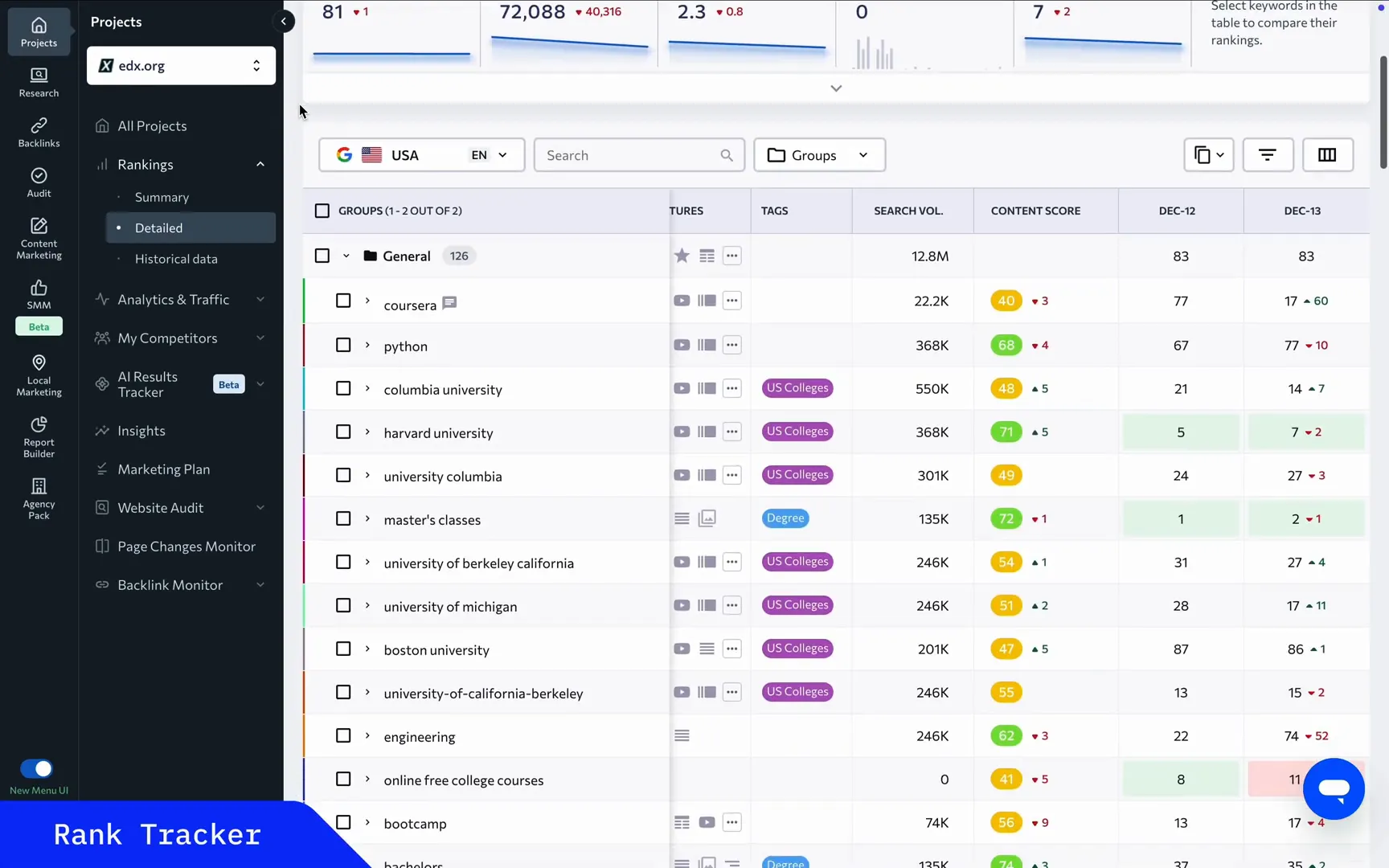ChatGPT is no longer just an AI chatbot answering questions; it now processes over 1 billion web searches weekly and is rapidly evolving into a personal shopping assistant for millions of users. This shift opens up an exciting new frontier for marketers and e-commerce businesses. In this article, we’ll explore how ChatGPT Shopping works, how it surfaces product recommendations, and most importantly, how you can optimize your products and brand to get featured.
Table of Contents
- 1. Understanding the Product-First, Retailer-Second Model
- 2. Leveraging Product Feeds and Speculating on Data Sources
- 3. Encouraging Positive User-Generated Content and Online Mentions
- 4. Optimizing Product Pages for AI Crawlers
- 5. Navigating Price Competition and Sentiment Analysis
- 6. Preparing for the Future of Paid Placements and Affiliate Fees
- 7. Embracing Generative Engine Optimization (GEO) and Answer Engine Optimization (AEO)
- FAQ: Frequently Asked Questions About ChatGPT Shopping
- Conclusion: Positioning Your Brand for the AI Shopping Revolution
1. Understanding the Product-First, Retailer-Second Model
Unlike traditional Google Shopping ads that show products alongside retailers simultaneously, ChatGPT Shopping operates on a product-first, then retailer model. When you search for products in categories like fashion or beauty, ChatGPT displays product tiles within the chat interface. Clicking on a product tile reveals a list of retailers offering that product.
This subtle but important difference means ChatGPT emphasizes the product itself as the primary focus of discovery, and only after that does it present purchase options. The retailer choice comes secondary.
For e-commerce retailers, this implies that gaining visibility for your product is the first hurdle. Once a product is surfaced, multiple retailers selling it compete for the sale. This layered approach is more akin to organic Google Shopping results than paid ads, signaling a new way for brands and retailers to approach visibility in AI-powered shopping.
2. Leveraging Product Feeds and Speculating on Data Sources
ChatGPT Shopping pulls data from various product feeds, although OpenAI hasn’t publicly disclosed which ones. Based on industry insights, it’s likely that Microsoft Bing’s shopping feed is a significant source, given OpenAI’s partnership with Microsoft. Additionally, Shopify’s data powers Perplexity Pro’s shopping feature, suggesting Shopify integration may already be or soon will be part of ChatGPT’s shopping ecosystem.
Understanding these potential data sources is crucial. If you sell through platforms like Shopify or Bing Merchant Center, ensuring your product feeds are accurate, comprehensive, and optimized can improve your chances of being recommended.
Optimizing your product feed is a foundational step that aligns well with traditional SEO and shopping feed best practices. This is an area where agencies like Digital Reach can provide expert guidance to maximize your product feed quality and visibility.
3. Encouraging Positive User-Generated Content and Online Mentions
ChatGPT goes beyond product feeds by researching the web for additional information about products. This includes user-generated content (UGC) sites like Reddit and high-authority publications such as Apple Insider. For example, in a search for a “best slim but rugged iPad Air case,” ChatGPT cited positive Reddit discussions about the product, contributing to its visibility and ranking.
This means building a strong presence across UGC platforms and authoritative media outlets can increase your chances of ChatGPT recommending your products. It’s not just about having great products but also about having a compelling and favorable online narrative.
Brands should consider investing in digital PR and community engagement strategies to generate authentic conversations and reviews. Our digital PR team at Digital Reach specializes in securing high-tier coverage to boost such visibility.
4. Optimizing Product Pages for AI Crawlers
While ChatGPT currently pulls from third-party product feeds, OpenAI is exploring ways for merchants to submit products directly. In preparation, merchants should ensure their product pages are rich with detailed information and properly structured using schema markup, especially for reviews.
Schema markup helps AI crawlers understand review snippets and other product details better, potentially increasing your product’s chances of being surfaced in AI shopping results.
For merchants selling proprietary products, this is an opportunity to define your product’s unique value proposition clearly on your site, making it easier for AI tools to recommend your product confidently.
5. Navigating Price Competition and Sentiment Analysis
ChatGPT Shopping encourages a form of price competition but not necessarily a race to the bottom. For example, a retailer advertising a lower product price but charging exorbitant shipping fees is unlikely to win the sale. ChatGPT transparently shows shipping costs, helping users make informed decisions.
Beyond price, brand sentiment plays a growing role in AI recommendations. Tools like Profound offer sentiment analysis to help brands understand how AI search views them. For instance, Vanguard’s emphasis on low fees is a strong selling point but negative sentiment around account fees could be impacting its AI recommendation potential.
Brands must carefully manage their online reputation and sentiment to ensure AI tools can clearly communicate why customers should choose them over competitors.
6. Preparing for the Future of Paid Placements and Affiliate Fees
Currently, ChatGPT Shopping listings are unpaid — there’s no sponsorship, advertising, or affiliate fees involved. However, this is likely to change. Google’s Q1 earnings show search advertising revenue continues to rise, and OpenAI’s CEO Sam Altman has indicated openness to “tasteful advertising” that charges affiliate fees without selling priority placements.
This raises important questions: If paid placements don’t guarantee better visibility, what incentives will retailers have to pay affiliate fees? The landscape is evolving, and brands should stay informed and ready to adapt to new monetization models in AI shopping.
7. Embracing Generative Engine Optimization (GEO) and Answer Engine Optimization (AEO)
One of the biggest implications of AI shopping is the compression of the buyer journey. Instead of multiple searches, website visits, and content consumption, ChatGPT aims to provide a seamless experience inside the chat interface.
For retailers, this means less visibility into traditional data like website clicks and user behavior, making optimization more challenging. To compete, businesses must invest in Generative Engine Optimization (GEO) and Answer Engine Optimization (AEO), focusing on:
- Crafting clear, compelling brand stories for AI to communicate
- Optimizing website content to be AI-readable and structured
- Encouraging widespread positive mentions and reviews across the web
These strategies will position your brand and products to stand out in AI-powered shopping results and future-proof your e-commerce marketing.
FAQ: Frequently Asked Questions About ChatGPT Shopping
Q1: How does ChatGPT choose which products to recommend?
ChatGPT combines product feed data with deep research across the web, including user reviews, discussion forums, and authoritative publications. It prioritizes products with positive sentiment, rich information, and visibility across multiple sources.
Q2: Can merchants pay to get their products featured on ChatGPT Shopping?
Currently, ChatGPT Shopping does not offer paid placements or sponsorships. However, OpenAI is exploring affiliate fee models where merchants might pay for sales referred through the platform, but without priority placement in results.
Q3: What can I do to improve my product’s chances of being recommended?
Ensure your product feeds are accurate and optimized, enrich product pages with detailed information and schema markup, encourage positive reviews and discussions on UGC and authoritative sites, and maintain a strong, positive brand sentiment online.
Q4: How is ChatGPT Shopping different from Google Shopping?
ChatGPT Shopping focuses on a product-first experience, where users discover products before seeing retailer options. Google Shopping typically displays products alongside retailers simultaneously and is heavily paid-ad driven, while ChatGPT is currently organic and research-driven.
Q5: What are Generative Engine Optimization (GEO) and Answer Engine Optimization (AEO)?
GEO and AEO are emerging SEO strategies focused on optimizing content and brand presence for AI-powered search and answer engines like ChatGPT. They involve structuring content for AI readability, crafting compelling brand narratives, and encouraging positive online conversations.
Conclusion: Positioning Your Brand for the AI Shopping Revolution
ChatGPT Shopping represents a fundamental shift in how consumers discover and purchase products online. The AI-powered, product-first approach demands new marketing strategies focused on product visibility, online reputation, and AI-friendly content optimization.
By understanding the mechanics of ChatGPT Shopping and proactively optimizing your product feeds, website content, and online presence, you can position your brand to be among the winners in this rapidly evolving landscape.
If you want expert help navigating this new frontier, reach out to Digital Reach to boost your visibility in AI shopping tools and future-proof your e-commerce marketing strategy.
How do you feel about ChatGPT becoming a shopping assistant? Will you trust its recommendations? Let us know your thoughts in the comments below!
